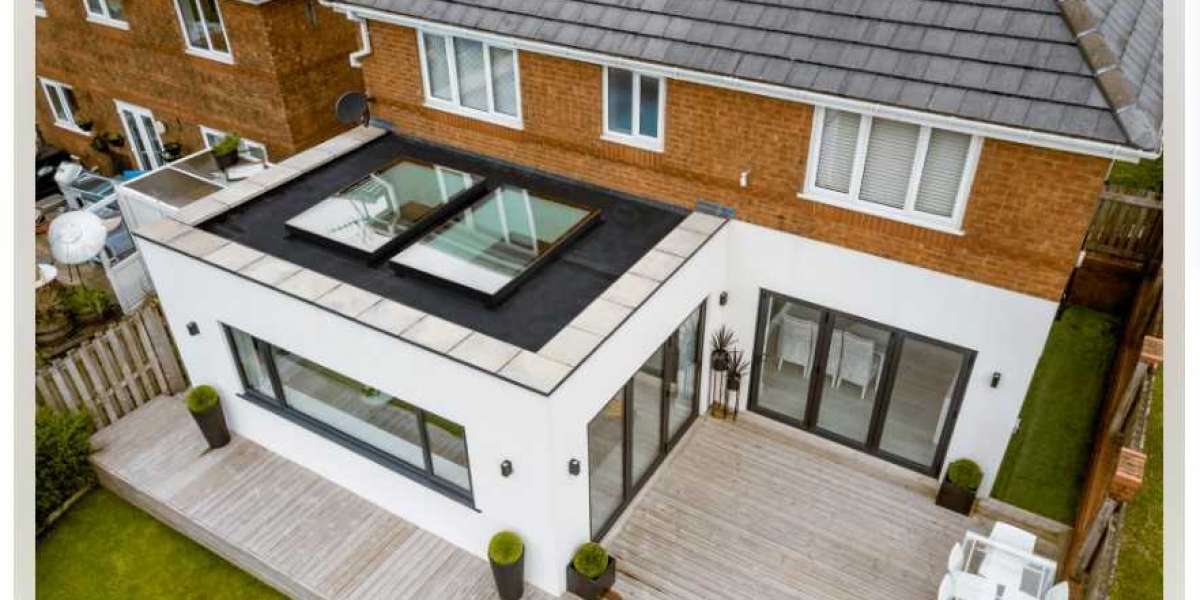Adding an extension to your home is a great way to increase its value and living space. However, with so many options available, it can be difficult to decide which type of extension is best suited to your needs and property. This guide will explore the most common types of house extensions and help you determine which one is right for your situation.
Rear Extensions
A rear extension is one of the most popular and versatile types of house extensions. As the name suggests, it is built out from the back of the property. Rear extensions are generally single-storey but can also be built over two levels.
Some key benefits of a rear extension include:
Provides additional space at the back of the home without impacting the front. This maintains the aesthetic appeal and kerb appeal of the front of the property.
Allows for a variety of uses such as a larger kitchen, dining area, living room, playroom, home office etc. depending on your requirements.
Does not require planning permission if it meets certain size restrictions set by the local planning authority. This makes the process quicker and simpler.
Can often be completed without disturbing the existing structure of the home too much.
Some potential drawbacks include the loss of private outdoor space at the rear. It may also impact any nearby neighbors by reducing natural light. The foundation needs to be strong enough to support an extra story.
Side Extensions
As the name suggests, a side extension is built out from the side of an existing property. This type of extension is best suited for properties that have adequate side space available.
Benefits of a side extension include:
Provides more usable internal space without reducing private outdoor space.
Can accommodate additional bedrooms, bathrooms, or living areas.
Maintains the aesthetic appeal of the front and rear elevations.
Often does not require planning permission if within size limits.
Potential limitations are that it may impact light to neighboring properties. Structural work may also be required if load-bearing walls need to be moved. The extension could make the property feel narrower and more enclosed.
Kitchen Extensions
A kitchen extension involves expanding the size of the existing kitchen to create a larger, more functional cooking and dining space. This is a very popular choice as many older homes have small, outdated kitchens.
Benefits of a kitchen extension include:
Provides a larger area for food preparation, cooking and entertaining guests.
Allows for integrated appliances like double ovens, warming drawers, fridge-freezers etc.
Creates additional storage space for kitchen equipment and supplies.
Improves the flow between different work areas like cooking, cleaning and dining.
Increases the value and modern appeal of the property.
Requires less structural work compared to other extensions.
Potential limitations are loss of other living areas to make way for the bigger kitchen. Additional plumbing and electrical work may also be required.
Dormer Extensions
A dormer extension involves adding one or more vertical windows with a roof above them on the sloping roof of a house. This allows creating an additional bedroom or living space in the roof cavity.
Benefits of dormer extensions include:
Makes use of unused space in the roof to create extra rooms.
Suitable for attic conversions or loft extensions where space is restricted.
Does not extend the external walls of the property.
Can increase natural light in upstairs rooms.
Potential limitations are that the space under the roof may have low ceilings. Extra building work is required to reinforce the roof structure. Planning permission is also usually needed.
Pro Vs. Cons Without Table
Rear Extensions
Pros: Provides additional living space without impacting the front, allows versatile uses, often doesn't require planning permission.
Cons: Can reduce private outdoor space, may impact neighbors access to light.
Side Extensions
Pros: Provides internal space without reducing garden, maintains aesthetic appeal, often doesn't require planning permission.
Cons: May impact neighbor's light, structural work may be required, can make the property feel narrow.
Kitchen Extensions
Pros: Creates spacious modern kitchen, improves workflow, increases property value, requires less structural changes.
Cons: May reduce other living areas, additional plumbing and electrical work needed.
Dormer Extensions
Pros: Makes use of unused roof space, suitable for loft conversions, doesn't extend external walls.
Cons: Low ceilings, extra building work to reinforce roof, usually requires planning permission.
Frequently Asked Questions
Do extensions require planning permission?
It depends on the type, size, and location of the extension. Rear or side extensions up to a certain size often don't require permission. But it's best to check your local planning guidelines. Larger extensions usually do require planning permission.
How much do house extensions typically cost?
House extension costs can vary significantly based on the size, type of work involved, and location. On average, expect to pay between £100-£300 per square foot for a basic rear or side extension. More complex projects may be £300-£500+ per sq ft. Obtain quotes from at least 3 reputable builders.
What is the process for getting an extension built?
The typical process involves initial discussions, preparing drawings, obtaining planning permission, hiring a builder, starting construction work, and completion. Key steps are assessing your requirements and budget, hiring an architect to draw up plans, submitting a planning application, getting quotes from builders, signing contracts and insurance, and managing the build process. It generally takes 4-6 months from start to finish.
How can extensions add value to my property?
Extensions can significantly increase the amount of living space and the number of bedrooms or bathrooms. This directly adds to the property's overall value. Larger, high-quality extensions that provide versatile living areas are most likely to have the best return on investment when you come to sell. On average, expect about 70-80% of the total extension costs to be recouped in increased property value.
Recommended House Extension Companies
Whether you're looking to add a new kitchen, bedroom or living space, hiring experienced professionals is highly recommended. Here are some top rated home extension specialists in London to consider:
BohunOne - Full range of building services including extensions, loft conversions, new builds etc. Cover London areas.
Bellway - Highly rated builders offering new build homes and structural home improvements across London.
Taylor Wimpey - Large developer constructing new homes and extensions in London and nationwide.
Berkeley Group - Premier developer with portfolio including home extensions, renovations and new builds in London.
Countryside Properties - Major housebuilder with projects across London, including extensions and loft conversions.
I hope this guide has helped explain the different types of house extensions and factors to consider when planning your project. Let me know if you have any other questions. Speaking to a professional will help determine the best option suited to your property and needs.







